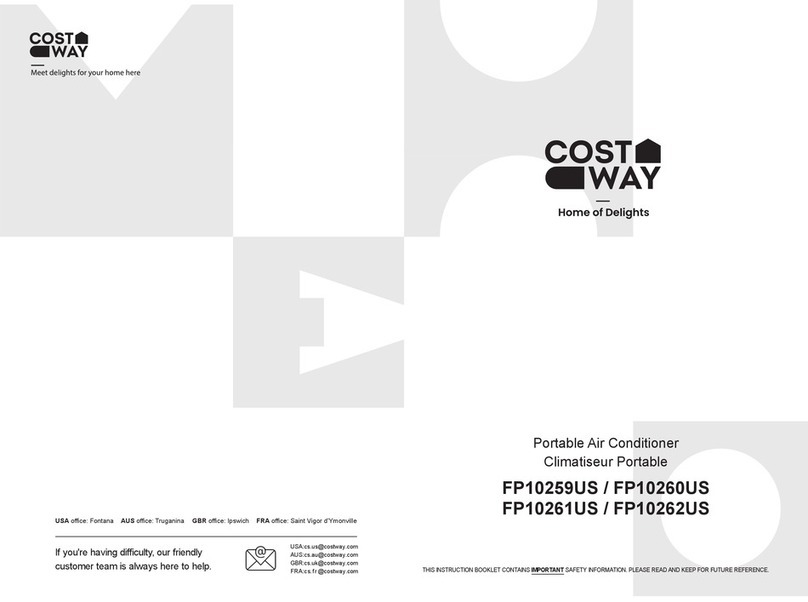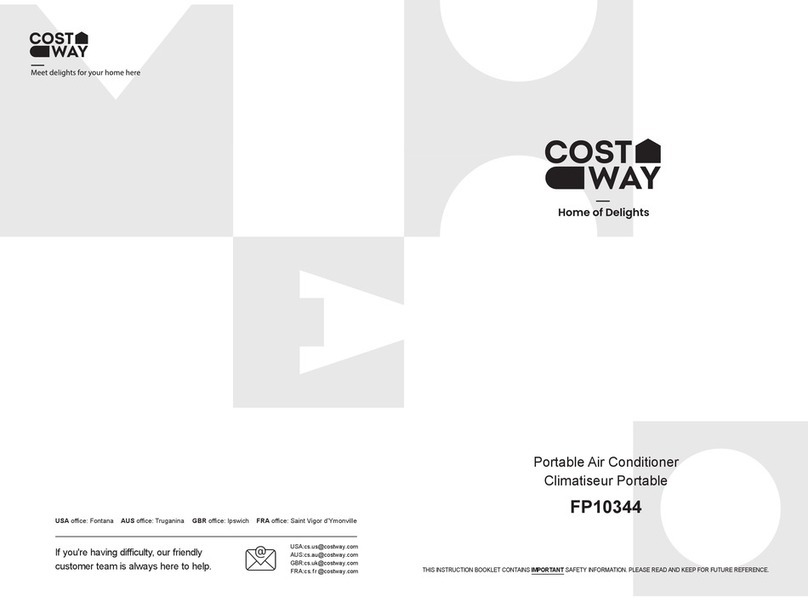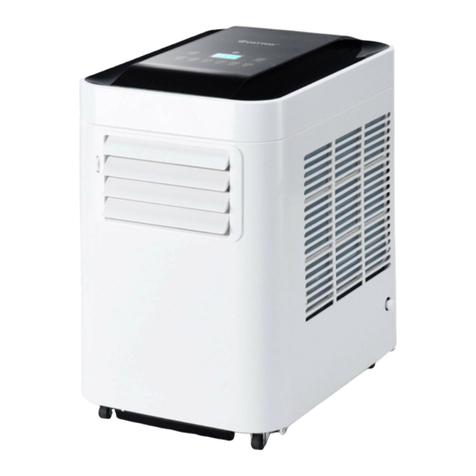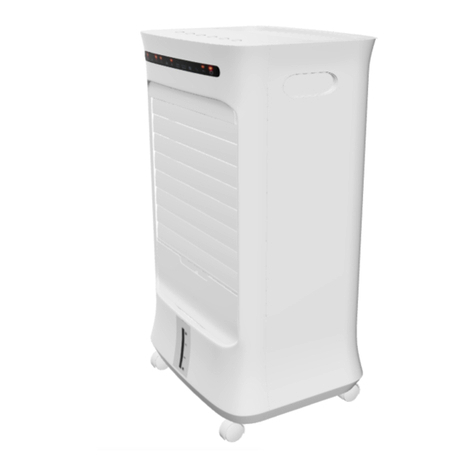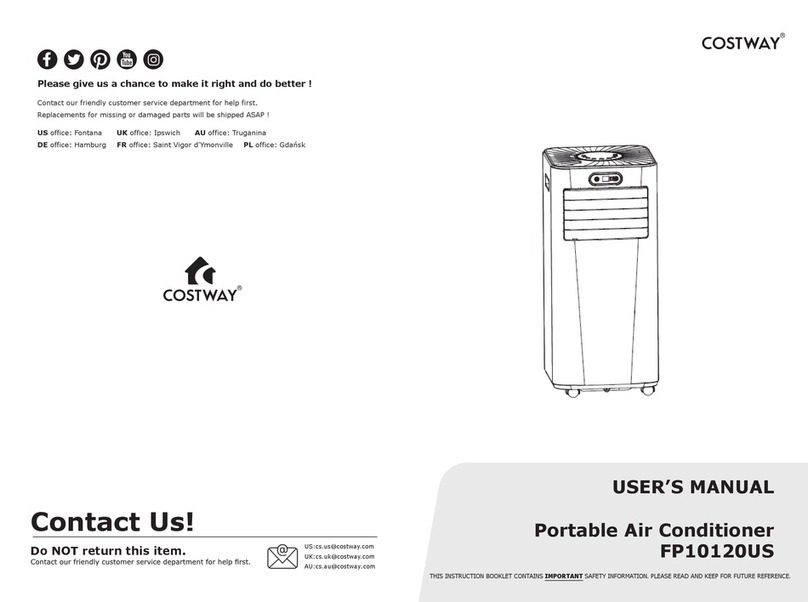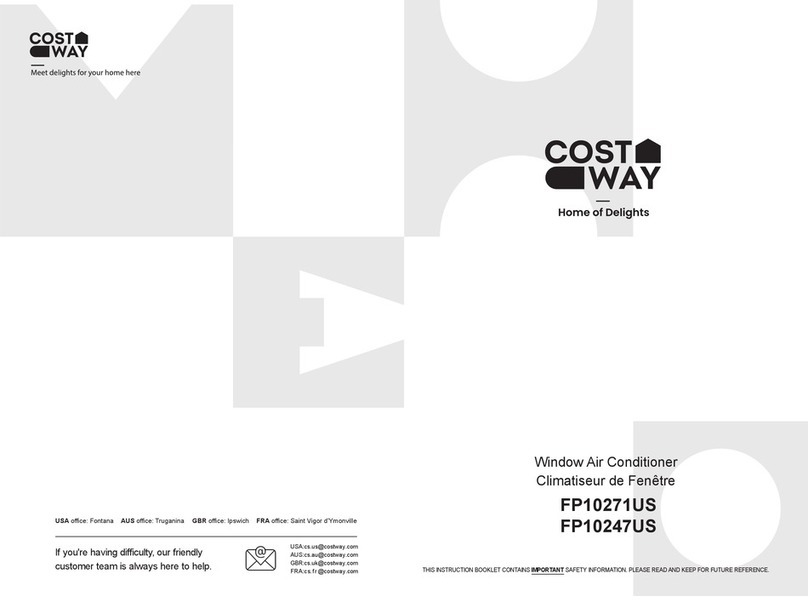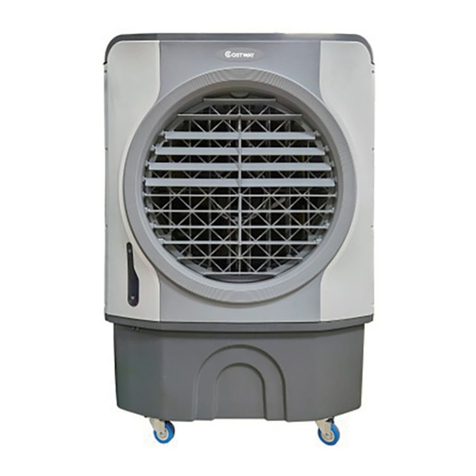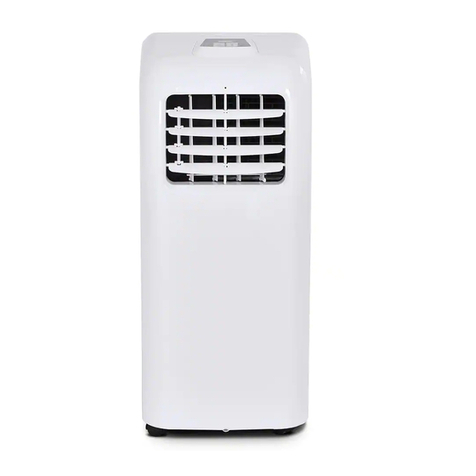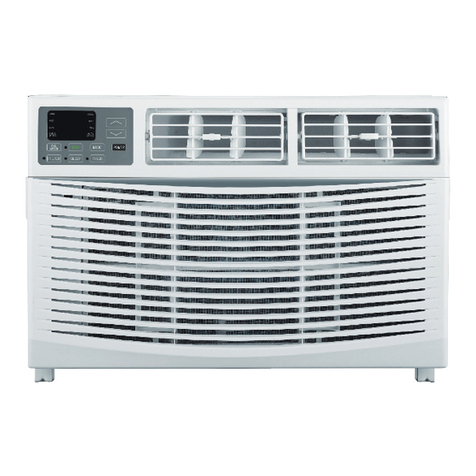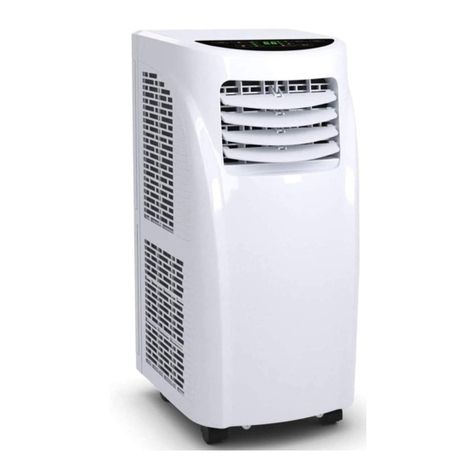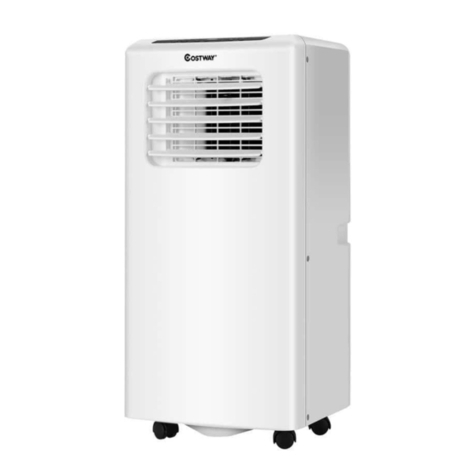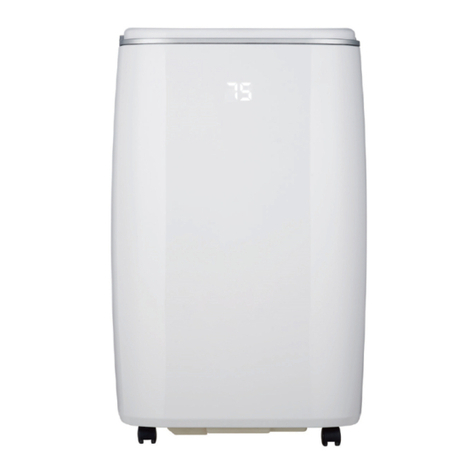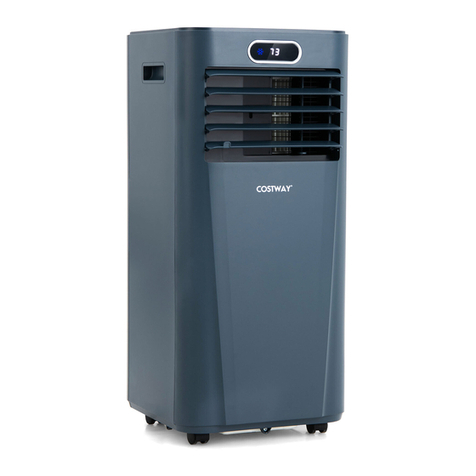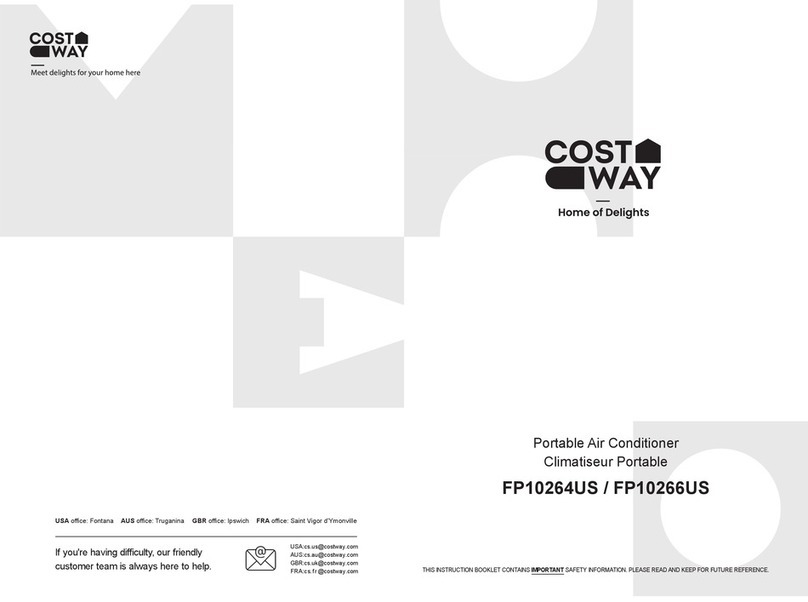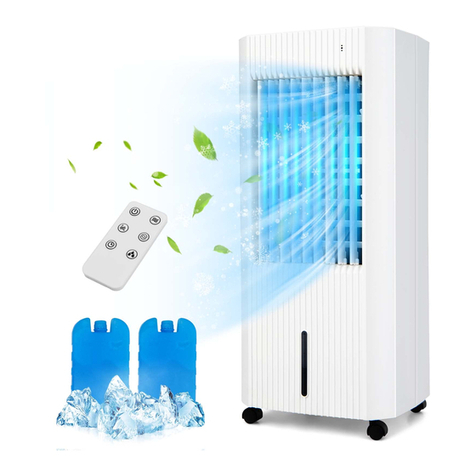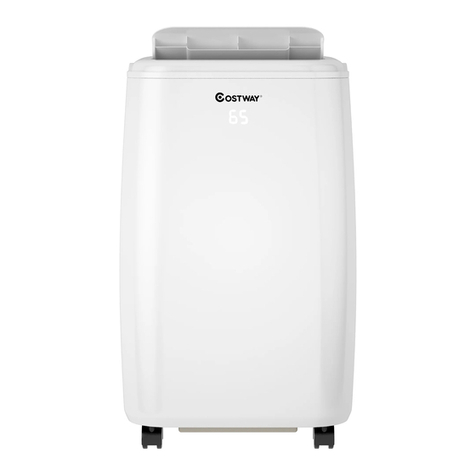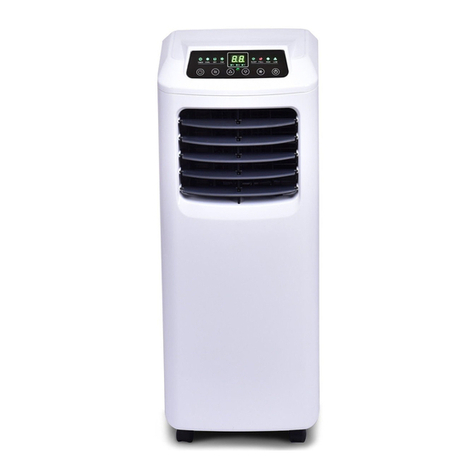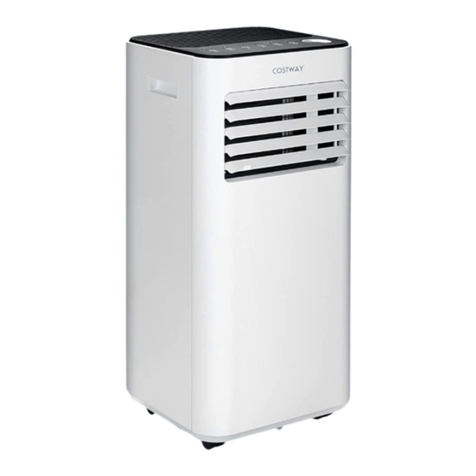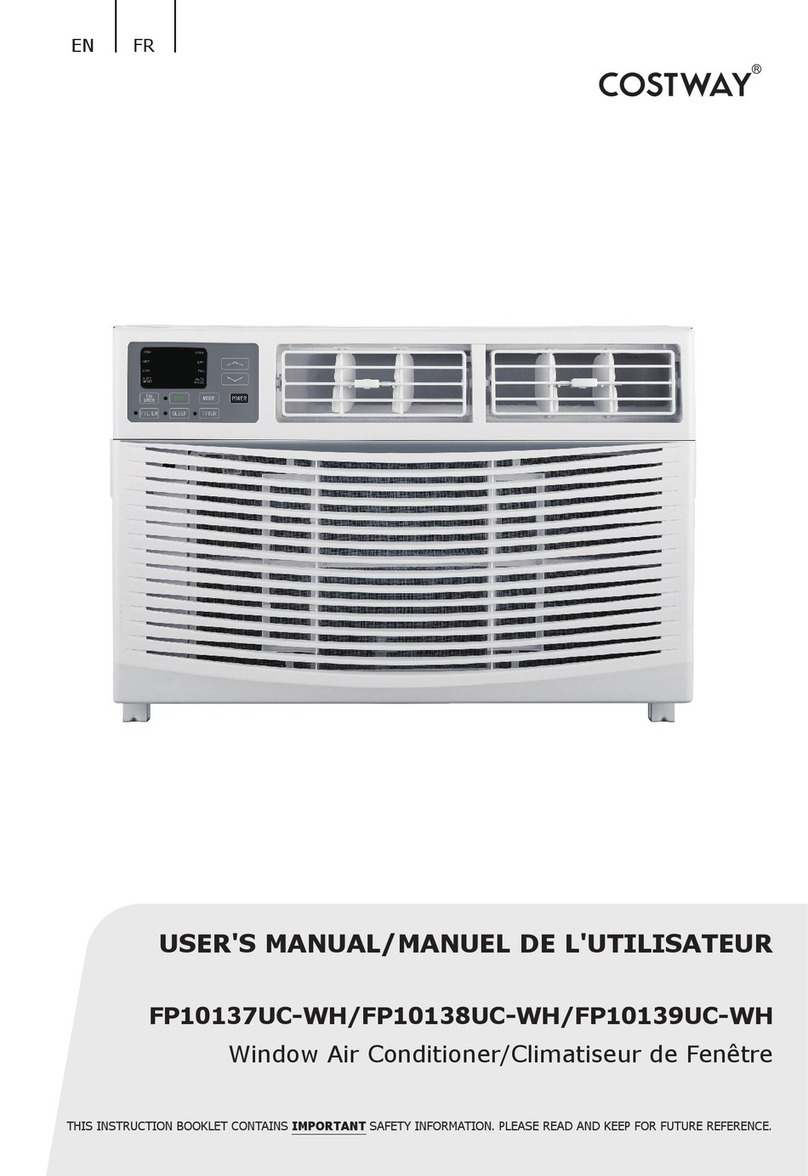
• If any hot work is to be conducted on the refrigeration
equipment or any associated parts, appropriate fire
extinguishing equipment shall be available to hand. Have a dry
powder or CO² fire extinguisher adjacent to the charging area.
• No person carrying out work in relation to a refrigeration
system which involves exposing any pipe work that contains or
has contained flammable refrigerant shall use any sources of
ignition in such a manner that it may lead to the risk of fire or
explosion. All possible ignition sources, including cigarette
smoking, should be kept sufficiently far away from the site of
installation, repairing, removing and disposal, during which
flammable refrigerant can possibly be released to the
surrounding space. Prior to work taking place, the area around
the equipment is to be surveyed to make sure that there are no
flammable hazards or ignition risks. “No Smoking” signs shall be
displayed.
• Ensure that the area is in the open or that it is adequately
ventilated before breaking into the system or conducting any hot
work. A degree of ventilation shall continue during the period
that the work is carried out. The ventilation should safely
disperse any released refrigerant and preferably expel it
externally into the atmosphere.
Do not apply any permanent inductive or capacitance loads to
the circuit without ensuring that this will not exceed the
permissible voltage and current permitted for the equipment in
use. Intrinsically safe components are the only types that can be
worked on while live in the presence of a flammable
atmosphere.The test apparatus shall be at the correct rating.
Replace components only with parts specified by the
manufacturer. Other parts may result in the ignition of refrigerant
in the atmosphere from a leak.
• Check that cabling will not be subject to wear, corrosion,
excessive pressure, vibration, sharp edges or any other adverse
environmental effects. The check shall also take into account the
effects of aging or continual vibration from sources such as
compressors or fans.
• Under no circumstances shall potential sources of ignition be
used in the searching for or detection of refrigerant leaks. A
halide torch (or any other detector using a naked flame) shall not
be used.
• Electronic leak detectors shall be used to detect flammable
refrigerants, but the sensitivity may not be adequate, or may
need re-calibration. (Detection equipment shall be calibrated in a
refrigerant-free area.) Ensure that the detector is not a potential
source of ignition and is suitable for the refrigerant used. Leak
detection equipment shall be set at a percentage of the LFL of
the refrigerant and shall be calibrated to the refrigerant
employed and the appropriate percentage of gas (25 %
maximum) is confirmed. Leak detection fluids are suitable for
use with most refrigerants but the use of detergents containing
chlorine shall be avoided as the chlorine may react with the
refrigerant and corrode the copper pipe-work. If a leak is
suspected, all naked flames shall be removed/extinguished. If a
leakage of refrigerant is found which requires brazing, all of the
refrigerant shall be recovered from the system, or isolated (by
means of shut off valves) in a part of the system remote from the
leak. Oxygen free nitrogen (OFN) shall then be purged through
the system both before and during the brazing process.
08 09
